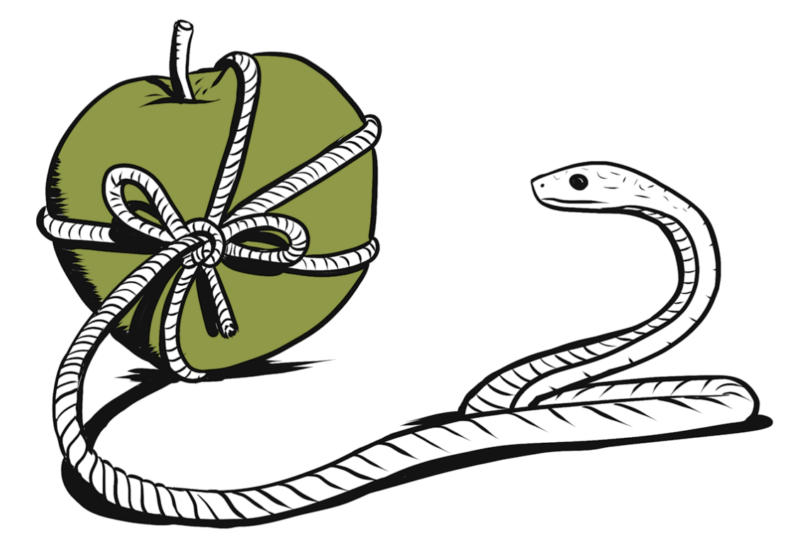It all started with a woman and an apple.
In the spring of 1848, Maggie and Kate Fox were fourteen and eleven, respectively. They were mischievous girls, prone to boredom and bad headaches, and lived with their parents in the tiny hamlet of Hydesville, New York. In those days, young women were urged to cultivate virtues like calmness and prudence, so they’d grow up not only placid, but healthy: heightened emotions, it was said, could cause hysterical fits and destroy the complexion. And so Maggie and Kate invented games to entertain themselves quietly, and indoors.
One night, the sisters discovered that if they dropped an apple from several feet in the air, or tied a string around it and dragged it along the floor, the fruit produced a strange sound. A sort of fleshy clunk. A bump in the night. The type of unidentifiable noise that creeped their mother out. “A silly woman,” Maggie said decades later. “She was a fanatic. I call her that because she was honest. She believed in these things.”
Come nighttime, the girls would play with the apple, reveling in their mother’s confusion. When the trick became too obvious, they started rapping on their bedposts, then loudly cracking their joints. It was silly stuff, but their parents grew more and more concerned by these mysterious noises, and by the spirit’s—for it must have been a spirit, they thought—communion with their young daughters. Before long, Maggie and Kate were conversing with the presence: they would ask questions, and the spirit would rap a certain number of times for yes or no, or they would arduously spell out sentences by reciting the alphabet and waiting for the spirit to rap when they named certain letters. Neighbors poured into the house to listen, and were shocked when the spirit seemed to know their personal details; they were even more shocked when it told them its own story. I am the spirit of a murdered peddler, said the spirit, who claimed to be named Charles, killed years ago by a local man and buried in this very basement! A few brave men went down to the basement to look for evidence, and came back horrified—and persuaded—after their shovels turned up bone fragments and strands of hair.

Forty years later, Maggie and Kate cracked. Their childish pranks had become a religion that boasted eight million followers. They were celebrities—and alcoholics, plagued by skeptics, and mentally exhausted after decades of laboring under the great weight of their con. Why hadn’t anyone exposed them at the beginning, when they were just girls? They had found the perfect marks; that’s why: their mother, who already believed in...
You have reached your article limit
Sign up for a digital subscription and continue reading all new issues, plus our entire archives, for just $1.50/month.
Already a subscriber? Sign in




